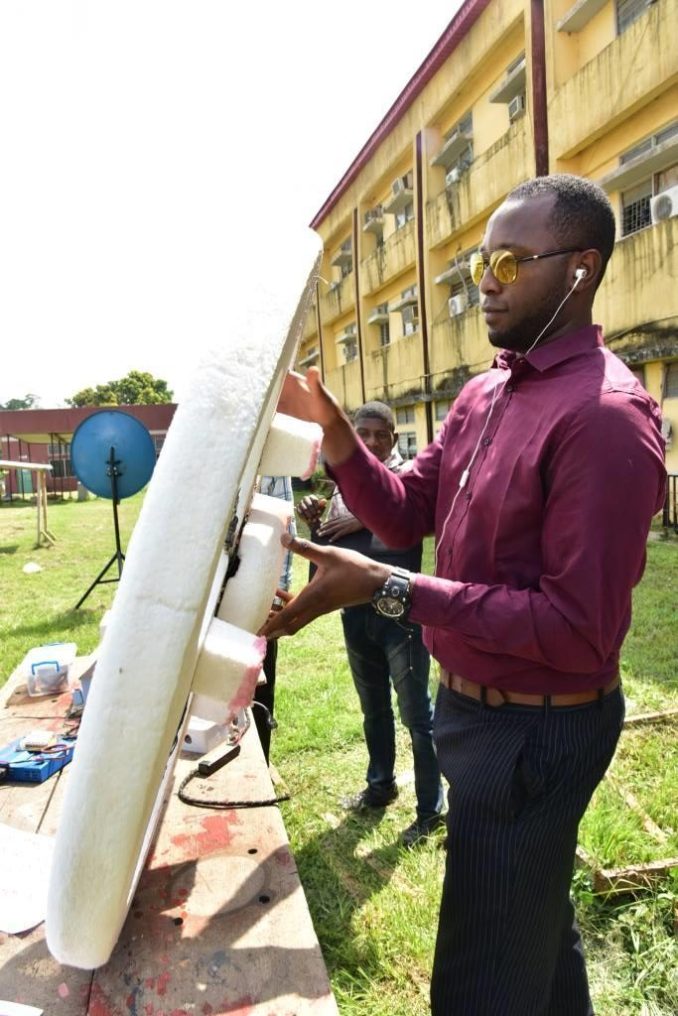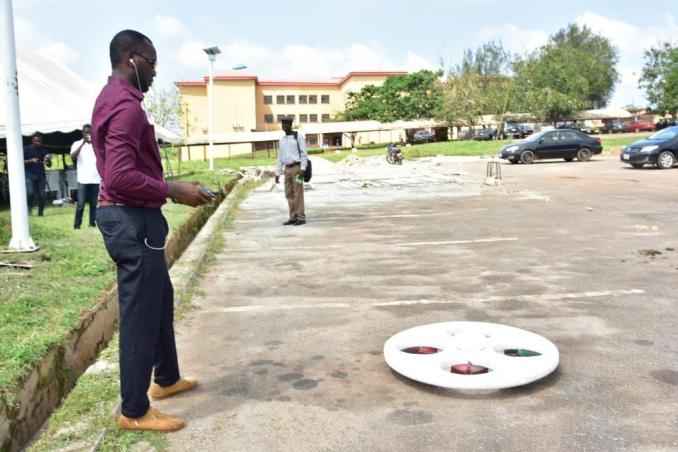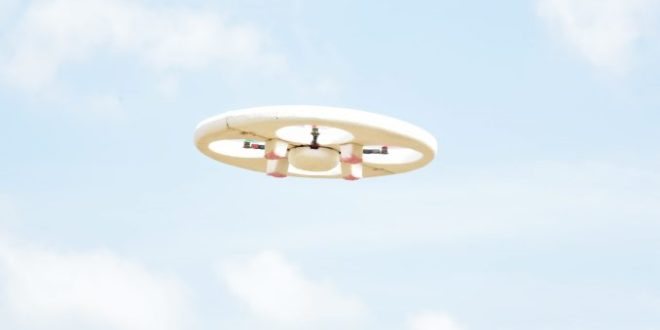A student of the Federal University of Technology Akure, FUTA, Mr Oluwaseyi Falola, has developed and put to flight a Unique Heliosat (Drone).
Using remote control, the drone climbed a specific height and directed to the task assigned to it.
According to a statement by the Deputy Director, Corporate Communications, Mr Adegbenro Adebanjo, said the FUTA-Heliosat is not the normal Drone device.
“It is much more. It is actually a mini satellite with the additional advantage of landing on water while its sensors pick information and send directly to a ground station.

“It can also serve as a normal drone for aerial surveillance or to capture sensation in the atmosphere, takes its reading and relates data back to ground station for analysis.”
According to Adebanjo, the journey to the FUTA-Heliosat started for Falola, the brain behind it, when he chose the venture for his Final Project at the Department of Mechanical Engineering, FUTA two years ago.

“uckily, his supervisor, Dr Oluwatosin Dahunsi who guided him through the production of the first prototype, gave him all the support and together they began the process of fine-tuning and polishing the Heliosat to what it has become today.
“And when it soared into the atmosphere and also landed on water without sinking they knew they had reached a milestone.
“With the help of Prof. Bello and Dr Mrs. Folasade Dahunsi, Falola did not abandon his pet project even when he returned for his master’s Degree and more fine-tuning took place.
“And when the FUTA-Heliosat was exhibited on the grounds of the School of Engineering and Engineering Technology on Tuesday, November 26, 2019, the Dean, School of the School Professor Aremu Akintunde described it as a critical addition to the search for local and viable technology for the country,” he further explained.
The Vice Chancellor, Prof. Joseph Fuwape, said FUTA will continue to give Falola all the supports he needs to reach his full potentials and contribute to the technological development of the country.
Most of the components of the Heliosat were locally sourced.
The unique foam that allows it to float on water was sourced from a foam manufacturing company in Abuja while the aluminum component was sourced in Akure with other apparatuses.
Some of the sensors were imported but calibrated to fit into the mode envisaged by Falola.
However with further fine tuning and support from relevant agencies.
According to Dr Dahunsi, who serves as a mentor to Falola, the Unique heliostat can be mass produced with mainly local components especially for security and other functions.
 Unmanned Aerial Vehicle The latest drone news
Unmanned Aerial Vehicle The latest drone news




